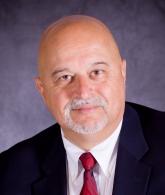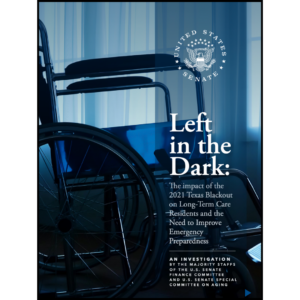Preparing for ‘active shooter’ events: Lockdowns
 This blog was co-authored by James Minninger, a security consultant with Sorensen, Wilder & Associates. A retired police sergeant in the suburbs of Philadelphia, he was an operator on SWAT, lead tactical firearms instructor and less lethal munitions operator. He is certified in basic and advanced SWAT operations, hostage rescue, basic and advanced weapons of mass destruction tactical operations and hostage negotiations.
This blog was co-authored by James Minninger, a security consultant with Sorensen, Wilder & Associates. A retired police sergeant in the suburbs of Philadelphia, he was an operator on SWAT, lead tactical firearms instructor and less lethal munitions operator. He is certified in basic and advanced SWAT operations, hostage rescue, basic and advanced weapons of mass destruction tactical operations and hostage negotiations.
Turn on the evening news and you’ll see regular reports of heavily armed individuals entering malls, grocery stores, movie theaters and schools and shooting indiscriminately at anyone in their sights.
The U.S. Department of Homeland Security profiles an "active shooter" as “an individual actively engaged in killing or attempting to kill people in a confined and populated area.” In most cases, active shooters use firearms(s) and have no pattern or method to selecting victims. Contrary to what we’d like to believe, the reality of an armed intruder or active shooter coming into your facility is all too real. The Pinelake Health & Rehab Center massacre in Carthage, N.C., in 2009—in which eight people were killed and two were wounded—and more recently, the Renown Regional Medical Center shooting in Reno, Nev., in December—in which one doctor was killed and another injured before the gunman killed himself—are just two horrific examples of active shooter events in healthcare facilities.
Most proactive long-term care (LTC) facilities have addressed this threat by revamping their policies and procedures. Does your facility have a written active shooter policy, and if so, does this policy suggest a facility lockdown? Or does it follow traditional suggestions—run, hide, fight—outlined by government agencies such as the Department of Homeland Security? Although the run/hide/fight doctrine is a sound approach to increase the chances of surviving one of these horrific events, it does not address a big challenge and concern within the realm of long-term care: the safety of residents.
Read the mission statement and core values for your facility. No doubt they contain statements and ideology focused on compassionate resident care, as they should. Your policies related to active shooter events need to address the balance between the safety of residents and the safety of staff.
FACILITY LOCKDOWNS
If your facility already has policies or procedures in place for an active shooter event, they may focus on locking down the facility. Lockdowns in LTC facilities already are (or should be) an integral part of the emergency operations plan. But what is a lockdown?
A facility lockdown, in the most simplest of terms, either keeps something out, keeps something in or keeps some things out and other things in.
LTC facilities will go into lockdown for various reasons, including both manmade and natural disaster emergencies. A few examples of lockdown events include natural disasters such as an earthquake, flood, hurricane, tornado or erupting volcano; emergencies such as a fire, power outage or chemical contamination; and criminal events such those involving an active shooter/armed intruder, deadly weapon, bomb threat, civil disturbance or hostage event.
Lockdowns need to be defined and broken down into what is trying to be accomplished by the lockdown procedure based on the event. The three primary lockdown types:
Partial lockdown‒no entry. This type is the most common of lockdown. One of its main purposes is to preserve the facility’s ability to respond and operate during a major external disaster such as a flood, tornado or earthquake. This action prevents people from overwhelming your resources and gives the facility control of entry for contamination and capability issues. Further, a partial lockdown‒no entry allows occupants to leave or evacuate in the event of fire, bomb threats, active shooter and power outages.
Partial-lockdown‒no exit. The purpose of this type of lockdown is to protect the occupants of the facility from an external hazard such as a civil disturbance or outside contamination. Further, such as in the case of an elopement, in this type of lockdown, occupants cannot leave without being screened by facility staff.
Full lockdown‒no entry or exit. In this type of lockdown, nobody is allowed to enter or leave the facility. Depending on the event, entry and/or exit may be permitted with staff/security screening or decontamination procedures in place.
CAUSE AND EFFECT
The policy and procedure adopted by the facility is predicated by the action of the event. In other words, cause and effect. Sounds simple, right? An event occurs (the cause) and the facility personnel react to it by way of policy and procedure (the effect).
Unfortunately, it’s not that easy and clear-cut regarding an armed intruder or active shooter incident. People must comprehensively and thoroughly understand active shooter events, including the ability to rapidly recognize the start of an event, the psychology of the shooter, stress inoculation of staff and rapid, appropriate decision-making skills regarding response.
Making the "right" decision quickly and devoid of hesitation, under a great amount of stress, takes an understanding of an event. All of your staff members must understand and practice the active shooter policy and procedure. If you can understand and master these concepts, it will save lives.
Unfortunately, an easy, "one-size-fits-all" policy and protocol for an active shooter event in healthcare does not exist. Because active shooter incidents are so dynamic and rapidly evolving, the response to one needs to be a multilayer, two-prong approach to increase the survivability chances for staff, residents and visitors in the facility. Your policy cannot mandate that staff members stay during an event, nor can it mandate that staff members run and evacuate, leaving the residents to fend for themselves. Remember your organization’s mission statement and core values to be compassionate in matters of resident care.
OUTSIDE EVENTS
Does your active shooter policy address an event that is occurring outside on the grounds of the facility as well as within the facility? Think about the types of lockdowns.
If an active shooting event is occurring in the facility, then initiate a partial‒no entry lockdown. You want people to evacuate the facility (if safe to do so), and you want no one to enter the danger zone. But for an active shooter event occurring outside in the parking lot of the facility, initiate a full lockdown. You don’t want the shooter to enter the facility, and you don’t want facility occupants to leave the facility and exit into the danger zone.
A lockdown needs to be a part of active shooter response policy, but not the end-all.
In the next blog, we’ll focus on personal safety and resident safety during an active shooter event and how and when to transition between focusing on the two. Unfortunately, the likelihood of significant injuries and fatalities during one of these horrific incidents is high. With proper pre-planning, policy and procedure, and staff training and drills, however, the chances of surviving an active shooter event within a healthcare facility increases dramatically.
This was the first in a series of blogs about active shooter events. See part 2: 'Active shooter' events: Balancing resident, staff safety

Steve Wilder, CHSP, STS, is president and chief operating officer of Sorensen, Wilder & Associates (SWA), a healthcare safety and security consulting group based in Bourbonnais, Ill. SWA performs workplace safety compliance audits and security vulnerability assessments in all types of healthcare facilities. Wilder can be reached at (800) 568-2931 or swilder@swa4safety.com.
Related Articles
Topics: Disaster Preparedness , Executive Leadership , Risk Management










